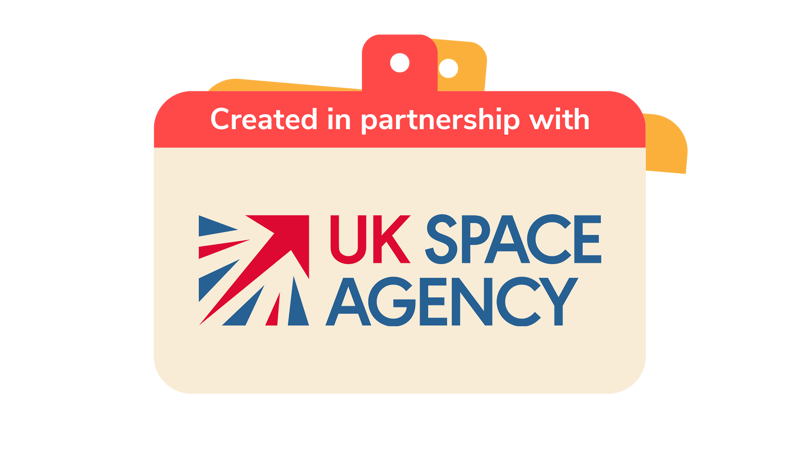
Make astronaut pudding
You’ll need
- Device with access to the internet
- Ingredients and equipment (see recipe card)
Before you begin
- Use the safety checklist to help you plan and risk assess your activity. Additional help to carry out your risk assessment, including examples. Make sure all young people and adults involved in the activity know how to take part safely.
- Make sure you’ll have enough helpers for each team to have one. You may need some parents and carers to help out if you’re short on helpers.
Food in space
- Explain that you’ll be making astronaut pudding and chatting about food in space.
- Ask everyone to think about what life might be like on the International Space Station (ISS). You could chat about questions such as:
-
- How is sleeping on the International Space Station different to how we sleep at camp?
- What might astronauts eat while on the International Space Station?
- How different is going to the toilet on the International Space Station?
- How do astronauts wash and keep clean while on the International Space Station?
Astronauts are weightless in space and can sleep in any position. The ISS crews usually sleep in sleeping bags located in small crew cabins. They attach themselves to something fixed, so that they don’t float around and bump into things. Each crew cabin is just big enough for one person.
Astronauts eat three meals a day: breakfast, lunch and dinner.
An astronaut can choose from many types of foods, such as fruits, nuts, chicken, beef, seafood, sweets and brownies.
Available drinks include coffee, tea, orange juice, fruit punches and lemonade.
Condiments, such as ketchup, mustard and mayonnaise, are also provided. But salt and pepper are in a liquid form; these can’t be sprinkled in space because they’d just float away!
Some foods like biscuits and fruit can be eaten normally. Other foods require adding water, such as macaroni cheese and spaghetti. There is even an oven provided in the space station to heat food to the proper temperature.
However, there are no refrigerators in space, so space food must be packaged, stored and prepared with care to stop it spoiling, especially on longer missions.
Head over to the European Space Agency’s website to find out more about eating in space.
A toilet on the ISS looks similar to the toilets we use down here on Earth. However, the astronauts fasten their bodies to the toilet, so that they won’t float away. They then use a vacuum cleaner-like machine to suck up their waste, which is then vacuum-dried.
On the ISS, astronauts don’t shower, but rather use liquid soap, water and rinseless shampoo. They squeeze liquid soap and water from pouches onto their skin. Then they use rinseless soap with a little water to clean their hair. They use ordinary towels to wipe off the excess water.
- Tell everyone about the problems with eating in space. Some of the problems include:
-
- There’s no gravity, so food will float about rather than stay in one place.
- Water won’t stay in a cup, but will instead float away.
- Crumbs and drops of liquid might float around, either making a mess or damaging the spacecraft.
Whip up a tasty treat
- Check that everyone has the ingredients and equipment they need ready to go.
- Show everyone how to complete each step of the recipe to make their astronaut pudding. Remind everyone that they can look at the recipe card to help them.
- Give everyone time to copy and catch up before you move on to the next step.
- Once everyone’s finished, tuck in and enjoy your pudding!
- Why not spend some more time chatting as a group about what everyone has learned, and what it might be like spending time on the International Space Station?
Watch what life is like in space
If you’re able to, you may want to watch these videos on cooking and making a cup of tea in space. Astronaut and Scouts Ambassador, Tim Peake, shows us how to make a cup of tea on the International Space Station (ISS). He spent 186 days in space, some of which was aboard the ISS. It was very important that he was able to make a brew!
To watch in full screen, double click the video
To watch in full screen, double click the video
Reflection
This activity helped everyone to think about how astronauts live on the International Space Station. Everyone should take a moment to think about what life in a strange environment and away from their family and friends might be like. They could think about what they’d miss most and what might make them feel a little closer to home while they’re far away.
How do people feel after a good meal? Food is important for energy but it can also remind people of friends, family, and normal life. People don’t only eat the things they need – they often have an emotional relationship with food too. Apart from food, what other things do people think astronauts might miss about Earth? There are many things that the group may miss about Earth, perhaps even homework if they were away for long enough.
This activity also helped people to try new things by making a ration pack good enough for an astronaut. Think about the care and attention everyone took to make the ration pack. What do people do when they take food with them on long trips? Can anyone think of any other ways that people keep food for a long time? Humans have been preserving food for a long time and traditional methods include drying, cooling, and pickling – like onions in a jar of vinegar. More recently, people can freeze or even irradiate food with ultraviolet light to make it keep for longer.
Safety
All activities must be safely managed. You must complete a thorough risk assessment and take appropriate steps to reduce risk. Use the safety checklist to help you plan and risk assess your activity. Always get approval for the activity, and have suitable supervision and an InTouch process.
- Scissors
Supervise young people appropriately when they’re using scissors. Store all sharp objects securely, out of the reach of young people.
- Food
Remember to check for allergies, eating problems, fasting or dietary requirements and adjust the recipe as needed. Make sure you’ve suitable areas for storing and preparing food and avoid cross contamination of different foods. Take a look at our guidance on food safety and hygiene.
- Music and films
Make sure music and films are age appropriate for the youngest person present.
- Water games and activities
Be careful when doing activities with, in, or near water. Check surfaces and reduce the risk of slipping where possible. Make sure you have appropriate supervision for this activity.
Adapt the recipe if you struggle to get any of the ingredients.
Help people find alternatives if they can’t have any of the ingredients. If anyone has a severe allergy, don’t allow anyone in the group to use the allergen or bring it into the meeting place.
All Scout activities should be inclusive and accessible.
For a full astronaut experience on Earth, sign up for Mission X and complete fitness and nutrition challenges as you train like astronaut.
Young people should be free to lead the discussion on life in space and share their own ideas and opinions on the advantages and disadvantages.
